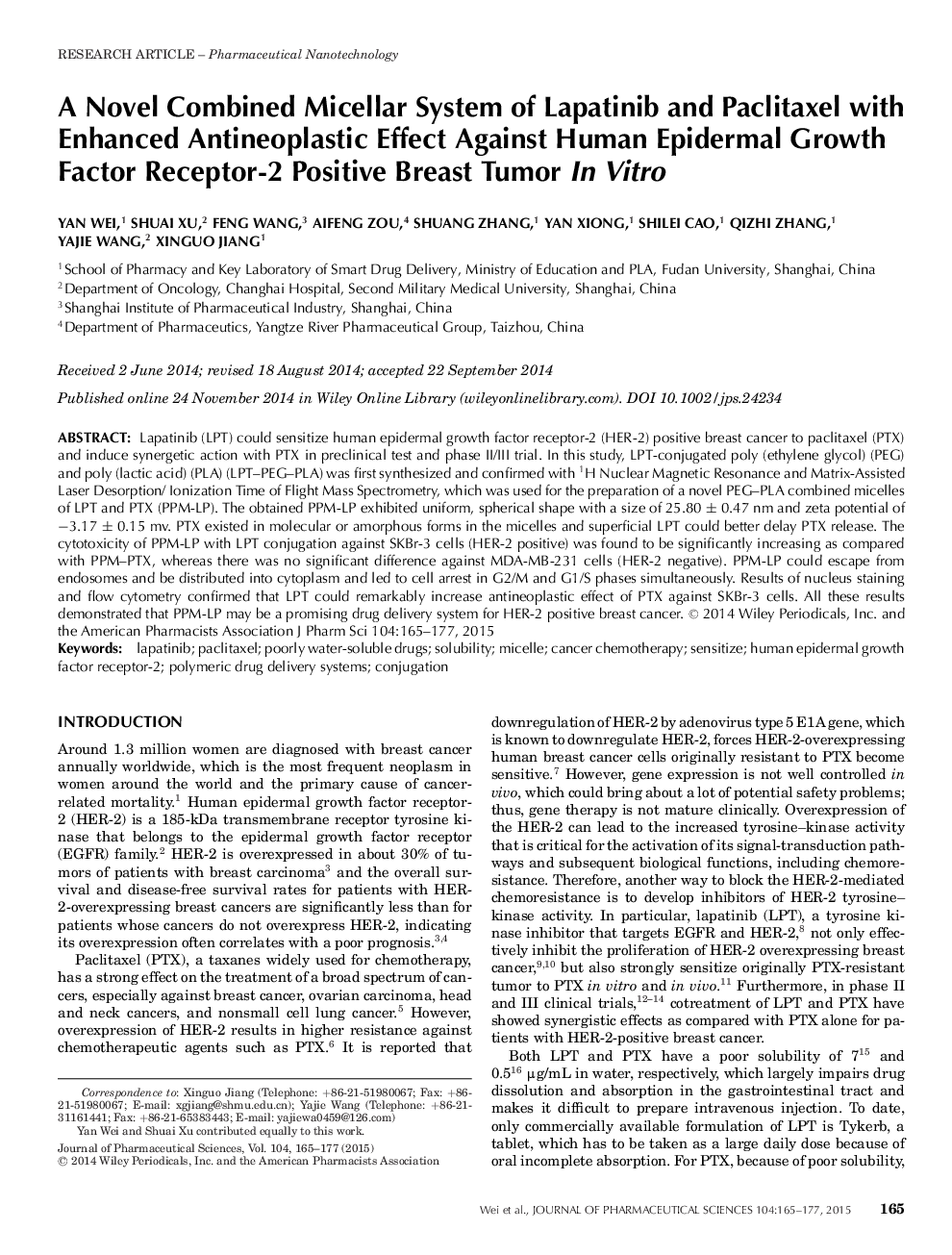| Article ID | Journal | Published Year | Pages | File Type |
|---|---|---|---|---|
| 2484633 | Journal of Pharmaceutical Sciences | 2015 | 13 Pages |
Abstract
Lapatinib (LPT) could sensitize human epidermal growth factor receptor-2 (HER-2) positive breast cancer to paclitaxel (PTX) and induce synergetic action with PTX in preclinical test and phase II/III trial. In this study, LPT-conjugated poly (ethylene glycol) (PEG) and poly (lactic acid) (PLA) (LPT-PEG-PLA) was first synthesized and confirmed with 1H Nuclear Magnetic Resonance and Matrix-Assisted Laser Desorption/ Ionization Time of Flight Mass Spectrometry, which was used for the preparation of a novel PEG-PLA combined micelles of LPT and PTX (PPM-LP). The obtained PPM-LP exhibited uniform, spherical shape with a size of 25.80 ± 0.47 nm and zeta potential of â3.17 ± 0.15 mv. PTX existed in molecular or amorphous forms in the micelles and superficial LPT could better delay PTX release. The cytotoxicity of PPM-LP with LPT conjugation against SKBr-3 cells (HER-2 positive) was found to be significantly increasing as compared with PPM-PTX, whereas there was no significant difference against MDA-MB-231 cells (HER-2 negative). PPM-LP could escape from endosomes and be distributed into cytoplasm and led to cell arrest in G2/M and G1/S phases simultaneously. Results of nucleus staining and flow cytometry confirmed that LPT could remarkably increase antineoplastic effect of PTX against SKBr-3 cells. All these results demonstrated that PPM-LP may be a promising drug delivery system for HER-2 positive breast cancer. © 2014 Wiley Periodicals, Inc. and the American Pharmacists Association J Pharm Sci 104:165-177, 2015
Keywords
Related Topics
Health Sciences
Pharmacology, Toxicology and Pharmaceutical Science
Drug Discovery
Authors
Yan Wei, Shuai Xu, Feng Wang, Aifeng Zou, Shuang Zhang, Yan Xiong, Shilei Cao, Qizhi Zhang, Yajie Wang, Xinguo Jiang,
